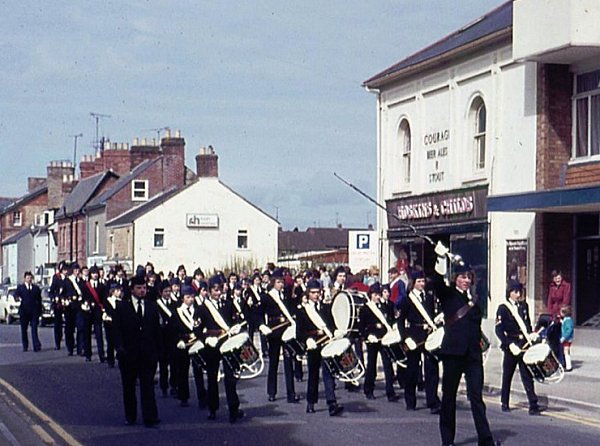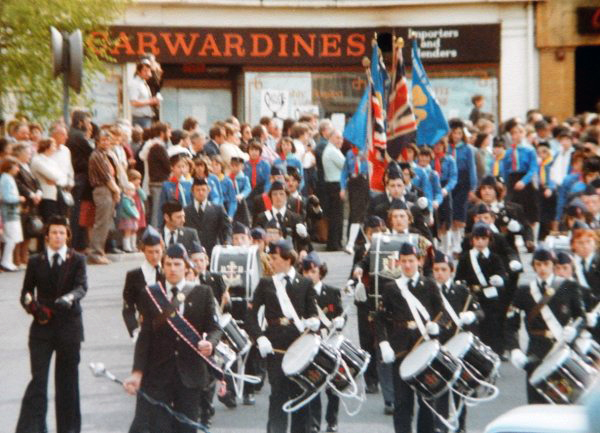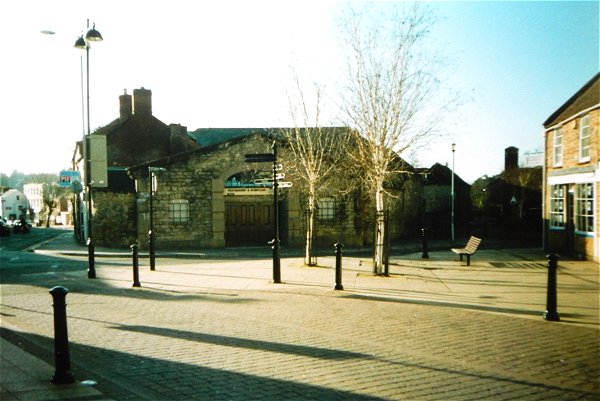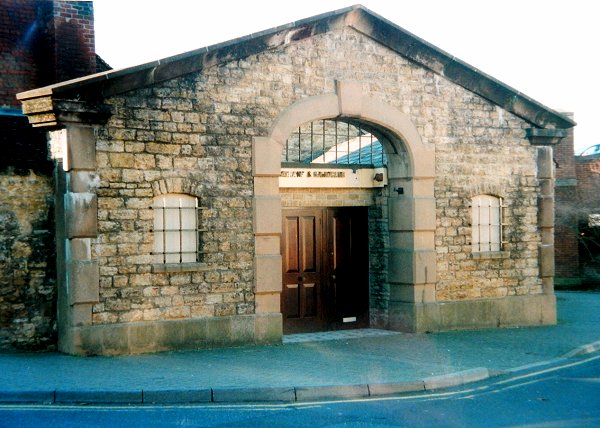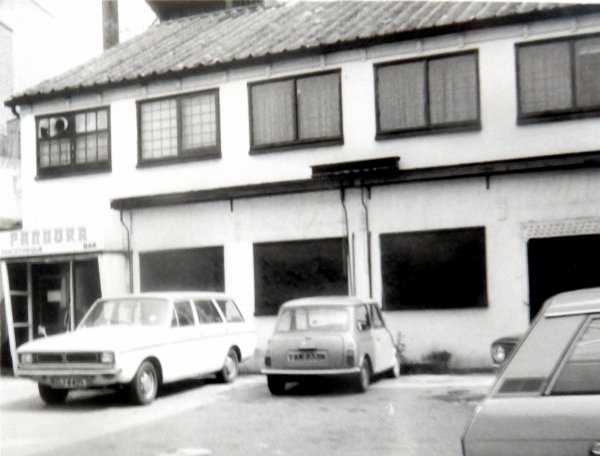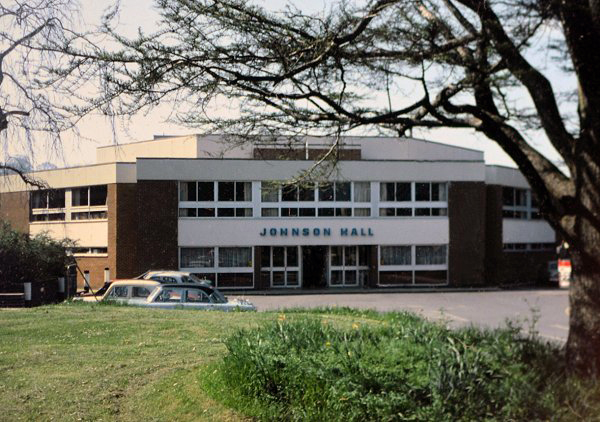Autumn Exhibition 2023
Autumn
Exhibition 2023
- presented by
Yeovil's Virtual
Museum
The Sound of Yeovil
A focus on Yeovil's heritage of sound and music in partnershipwith the Arts & Heritage Working Group's "Story of Yeovil" project.
Introduction
This exhibition
highlights much
of the history
of the
performance of
sound and music
in Yeovil, from
earliest times
to the present.
The exhibition features not only musicians and singers, but also venues - all (very) roughly in chronological order. The list is not exhaustive, and apologies to any group or individual unintentionally omitted.
![]()
|
||||||
|
The widespread English folk custom known as 'Riding the Stang' (also known as the Skimmington Ride), is recorded in England as far back as early medieval times and at least one occurrence was recorded in Yeovil, in 1607. The term is particularly associated with the West Country. Sometimes the participants would "ride the stang" - a pole carried between the shoulders of two or more men or youths - while the community gave a noisy, discordant mock serenade, frequently with pounding on pots and pans, known as 'rough music'. In Yeovil's recorded case of 1607 (although it appears to have been a regular and common occurence), the participants were the two Churchwardens, Thomas Marsh and Roger Traske who apparently willingly 'rode the stang' during a particularly raucous Church Ale celebration and ended up in front of the magistrates. The Quarter Sessions, in "Articles against Thomas Marsh and Roger Traske wardens at Yevel", recorded "Some of the disorders at our Church ale at Yeavell this year 1607. It was an usual thing upon the saboth day to have minstrelsie and dauncinge and carrying men upon a cavell staffe, the wardinges themselves Thomas Marshes and Roger Traske wear willingly so caried to the church."
'Riding the Stang', depicted in a 16th century plaster bas-relief from nearby Montacute House. A person is seen astride the stang, being carried by two men. They are followed by people making 'rough music' while a crowd looks on.
|
|
The travelling theatre companies of Victorian times were descended from the mummers and the 'strolling players' of Tudor England and the later Elizabethan theatre groups who traditionally performed in the courtyards of inns. By the nineteenth century performances given by travelling companies were usually held in large tented accommodation.
The New Star Theatre was a Yeovil-based travelling theatre company, and, from the notice (printed on silk) at left, is known to have been operating in 1885. The proprietor was Mr W Haggar who sang and performed along with his theatre company. The performance advertised here took place in the evening of Friday 29 October 1885, in the presence of the Mayor of Yeovil, Edwin Helliar. Although a price is not given in the notice, admission was probably one penny or, perhaps, more if you wanted a seat. Tickets were available from the Railway Inn or from the theatre itself.
|
|
Yeovil Volunteer Band, also known as the Yeovil Military Band, photographed around 1880. Officially it was the band of Yeovil F Company, 2nd Battalion, Prince Albert's Somerset Light Infantry. Standing, left to right, Alfred Dunn, Ebenezer Giles, Harry Pomeroy, Walter Bond, Herbert Jenner, Alfred Beare (Bandmaster), William Fort, Jack Fort, Charles Lane, EJ Lucas. Seated; George Larcombe, Walter Creese, Albert Ostler, Herbert Slade, unknown.
A nice sepia photograph of the Yeovil Military Band in 1892. At centre, with the beribboned tunic and holding the baton is band master Alfred Beare.
The Yeovil Military Band, in yet another uniform, with Band Master Alfred Beare at centre.
Yeovil Military Band photographed in 1913.
Back Row
- R Miller, H
Ratcliffe, F
Chant, R
Maunder, AM
Abbot
|
 From my collection |
|
A Yeovil ensemble prepares for a performance on a clearly makeshift stage (Health & Safety would have a fit these days). Check out the background, and you'll notice that they mostly arrived on bicycles. The photograph is by Edmund Hugh Rundle and dates to between 1900 and 1910.
|
|
The Assembly Rooms in Princes Street were built in 1888 and opened the following year, quickly becoming the town's premier music venue. The large Assembly Room itself, measuring 40 feet (12.2m) across by 65 feet (19.8m) deep, could accommodate a thousand people. In 1895 a permanent stage was built, complete with a proscenium arch and three dressing rooms, reducing the overall capacity of the venue to about 700. By around 1905 it was known as the Palace of Varieties and later was also briefly known as the Princes Ballroom and the Princes Theatre. This photograph was taken by Yeovil photographer Jarratt Beckett and published in his 1897 book "Somerset viewed through a Camera".
|
|
Members of an unknown Yeovil Friendly Society gather for a group photograph (colourised), probably at the end of a march through the town accompanied by a band - several band members of the band are in the photograph, especially at far left. Most Friendly Societies (Yeovil had over 15) had their own band. This photograph was taken by Frederick Christopher who was active in Yeovil from around 1898, thereby giving a rough date for this photograph.
|
|
Yeovil Adult School Band, in a postcard of 1907. The origins of the Yeovil Adult School lay in the Nonconformist revival of the second half of the nineteenth century, when members of the Society of Friends (Quakers) in several British cities established Sunday morning schools to instruct the working-class population in reading, writing and Bible study.
|
|
Yeovil Salvation Army Band. The Yeovil Corps of the Salvation Army was founded in 1882 following the appearance of a poster in the town announcing "The Salvation Army will open fire in the Cattle Market on Sunday 28th of May 1882 at 10am. Everybody welcome. Major Davey in command, assisted by Captain Crocker".
A postcard of the Yeovil band of the Salvation Army dating to around 1908.
A postcard of the Yeovil band of the Salvation Army dating to around 1915.
The Yeovil Salvation Army Temple Band, photographed in 1950.
The Yeovil Salvation Army Temple Band photographed in June 1950, as they march along Reckleford towards the Salvation Army Hall in Southville.
Yeovil Temple Band practice session, circa 1967. The Bandmaster is Steve Wright.
Yeovil schoolchildren gather for the 1912 South Somerset Children's Music Competition in St John's churchyard.
Children contestants of the 1912 South Somerset Children's Music Competition assemble outside St John's church.
|
|
During September 1914, Yeovil probably saw the greatest number of marching bands in its history as hundreds of volunteers marched through the town in the direction of the Town Railway Station. Each group of recruits being led my a marching band, as seen in the following three photographs
Volunteers parade through the Borough in 1914 preceded by a band and encouraged by large crowds of onlookers.
Volunteers for Kitchener's army march down Lower Middle Street in September 1914, on their way to the Town Railway Station, accompanied by a local band and huge crowds of onlookers.
Same place, roughly the same time, but a different group of recruits and a different band.
The First World War ended at 11am on 11 November 1918. On 5 February 1919, Yeovil celebrated with music and dancing at a Grand Victory Ball held at the Assembly Rooms.
|
|
Yeovil celebrated the official National Peace Day on 19 July 1919. A huge Peace Day Parade comprising hundreds or returning soldiers and several bands, led by Yeovil Town Band, marched through Yeovil. William RE Mitchelmore, being the first of Yeovil's mayors to be elected after the Great War, was known as the "Peace Mayor". Yeovil's thanksgiving service, the "United Drum-Head Service" was conducted by Rev Herbert Cecil Sydenham, the Vicar of Yeovil, and was held in Wyndham Fields. Following the service there was a procession, composed chiefly of some seven hundred ex-servicemen, watched on by great crowds of joyful Yeovilians. The procession through the streets of Yeovil ended up at Westlands where one of the large hangars was used to hold a civic reception.
The Yeovil Peace Day Procession, here comprising ex-servicemen, makes its way through Middle Street on 19 July 1919. At centre are Commercial Buildings and off-camera to the right the procession passes the Liberal Club. The series of photographs seen here was published as postcards by Yeovil photographer Walter Rendell. This photo, No 51, shows huge contingent of ex-servicemen led by a marching band.
Photo No 56 shows a small band, probably of ex-servicemen, followed by what appear to be a troop of Girl Guides.
|
|
A 1920's photograph of a parade in Station Road by railway men - complete with their band - in support of the London & South West Railway Servants' Orphanage.
The large, well-equipped Petters Band formed by men from all different areas of Petters Ltd, photographed in the 1920s.
The
Imperial
Dance
Band,
also
known as
The Imps,
played
Yeovil
throughout
the
1920s
and
1930s.
Names of
known
band
members:
L
Mitchel,
W Carey,
B White
(Banjo),
W
Martin,
L
Tompkins.
E Blake.
Sorry,
there is
no
further
information.
|
![]()

Courtesy
of Tony
Helliar
The Yeovil Accordion Band, photographed on stage in the early 1940s. Sorry, there is no further information.
![]()
|
Yeovilians remember... During the Second World War, Houndstone Camp used to hold dances and would send a bus or two into the town to pick up anyone in the forces and the local girls. I went to one of those as I was in a Home Guard uniform. The dance was well underway when an air raid developed. The unit based at Houndstone, being an anti-aircraft and searchlight training camp, went into action. The noise was fantastic, the building shook and the lights swayed. An announcement said that the air raid shelters were open if anyone wanted to use them. The band played on louder than ever, the dance continued and with each and every bang and roar the girls clutched their partners a little tighter, needless to say the men were delighted.
Wartime
Yeovil
recollections
of the
late
Walter
McGowan.
|
|
Bill Kelly and His Band played for crowds of Yeovilians throughout the day and into the evening of 8 May 1945 - Victory in Europe Day - generally known as VE Day, this was the public holiday to mark the formal acceptance by the Allies of Nazi Germany's unconditional surrender of its armed forces. It thus marked the end of World War II in Europe. The Western Gazette reported "The scenes at Yeovil on the night of VE Day were unequalled on any occasion within memory. The mood of the crowd was one of unrestrained jubilation. Hundreds whirled around in fantastic dances, jitterbugging, laughing, singing and shouting. Music was played by Bill Kelly and his Band and relayed through amplifiers on a National Fire Service van." Once again the evening was turned over to dancing, but on this occasion it was at the floodlit Huish Ground where a large crowd danced to Bill Kelly's Band. There was a concert in the Sidney Gardens given by the Westland Male Voice Choir and the Salvation Army Band played in the Borough.
Bill Kelly and his Band played for the crowd all day and throughout the evening.
A colourised photograph of Yeovilians enjoying the music of Bill Kelly and his Band - the crowds in the Borough danced throughout the day and well into the night of VE Day - and many carried on the following day!
|
|
|
|
Yeovilians
remember... "In the early 1950s, the Yeovil Drum & Bugle Band was made up from the ATC, ACF, GLB & Scouts led by David Jenkins. Every year there was the St George's Day parade from the town station up through town to St John's church, for a service, followed by the march back along Princes Street, the High Street and down through the Borough and Middle Street, back to the station. This was an extremely large event involving several hundred scouts, cubs, guides & brownies from all of the troops in the area, and was led by the Yeovil Drum & Bugle Band. Our drum major was a tall smart lad named Millard, who led the band followed by the parade. One year we marched from the church into Princes Street - drums drumming, bugles bugling and Millard swinging his mace with 'bags of swank' as they used to say! At Denners/Beales shop he continued straight on down Hendford. The rest of the band, realising that he was wrong, turned left into the High Street and the Borough and soon found it was impossible to blow a bugle and laugh at the same time and our tune fizzled out! Meanwhile, Millard finally realised that he had nobody behind him and decided to run down South Street where he met up with the band in the Triangle where he marched out to rejoin the head of the parade - mace swinging - as though nothing had happened!"
|
|
The Royal Marines Band marches through Middle Street, followed by a large contingent of Marines in the background, on 3 July 1954 to celebrate the centenary of the Marine Corps.
The Dixielanders Jazz Band were a Yeovil-based dance band of the 1950s and 1960s. Formed around 1955, the band played in local dance halls. The band was led by trumpeter Timmy Osborne, who was also the Bandmaster of Yeovil Town Band and the local Territorial Army Band. Ernie Noon was the guitarist and singer, and according to his nephew Clive Chant "his dark wavy hair and Errol Flynn moustache had many young ladies swooning". J Osborne was on trombone, Les Derrick on clarinet, Dave Prior on piano and J Downton on drums. If anyone knows the names of the accordion player and the double bass player (or the groupie in the left background), please let me know.
|
|
The Yeovil Silver Band photographed in the 1950 in front of the Sidney Gardens Bandstand with some local dignitaries including Walter Stanley Johnson (next to the lady mayoress) who funded the band.
|

From my collection
A ticket for the Olde-Tyme Ball at the Princes Ballroom, of Friday 5 May 1950, presented by the Yeovil & District Gay Nineties Club and featuring Norman Brooks and his Hansom Days Orchestra. A good orchestra could always find work at such dances - which were extremely popular in this period.
![]()
|
Sidney Gardens Bandstand was presented to the town by James Bazeley Petter on the occasion of the opening of Sidney Gardens in June 1898. The bandstand was home to many open-air band performances, enjoyed by Yeovilians through the decades. But sadly, being built of wood and thatched, it was vandalised and burnt down during the night of 29-30 May 1972.
And the band played on.... crowds enjoy the band music in the park during the 1960s.
|
|
The Yeovil Working Men's Band, photographed on location in the 1950s.
|
|
The 1950s were marked by the emergence of a distinct teen culture, seeking to distance themselves from the culture of their parents. It was characterized by new forms of music - skiffle and rock 'n' roll. At the height of the skiffle boom in 1957, an estimated 40,000 to 50,000 skiffle bands appeared at youth clubs and coffee bars throughout the UK, often including a washboard and a tea-chest bass - Yeovil was no exception. The defining sound of the emergent youth culture during this period was rock and roll – a style of music that both clearly drew upon the popular styles of the previous few decades and at the same time sounded completely fresh and new.
This is a venue many Yeovil 'Baby Boomers' will remember - Holy Trinity church hall, on the corner of Addlewell Lane and Mill Lane. This was the home of Teen Beat Club, held on Tuesday nights during the 1950s. The club was founded by Fred Cottrell, on a tight budget and initially using his own Dansette record player and record collection. Fred encouraged a very young Yeovil skiffle group, comprising teenagers Steve 'Stimpo' Stimpson and Sid Johnson on guitars, John Wilmington on tea chest bass and Ray Hewitt on drums, to perform their very first gig at Teen Beat as Steve and the Bandits. They were soon joined by Mike Tozer, as the band's vocalist. The band played regularly at Teen Beat, but later had a couple of lineup changes; Ian Jay replaced John Wilmington after he left to join the local group the Jaguars (see below), and Ray Hewitt was later replaced by Jeff Walbridge. The Teen Beat Club closed in the very late 1950s.
Members of the Teen Beat Club pose for a photo, with the band Steve and the Bandits on stage in the background.
The Bandits pose for a publicity shot.
A big "thank you" to various members of the 'Bygone Yeovil' Facebook Group for the following selection of comments that give a flavour of Teen Beat. "Fab memories of young teenager nights at Teen Beat - special times with live music and dancing (jiving). All the boys looked so smart, suited and booted, while us girls were dressed up to the nines in our dresses and shoes." - "The memories of Teen Beat come flooding back. Steve and the boys belting out music from the charts with Tony Hawkins at the mike." - "I remember it well, had some really good times there." - "Couldn’t wait for Tuesdays for Teen Beat." - "Lots of memories where we had fun." - "Many people of my age will have fond memories of that green hall that was the home of Teen Beat. Live rock music performed by lads we all knew or went to school with. Great times." - "Fab memories of Teen Beat on a Tuesday." - "Wonderful memories - we used to get dressed up and go there regularly dancing the night away." - "They were the best times ever, I loved Tuesday nights." - "That’s where we learned to jive great times." - "It was THE place to go. All local groups." - "Teen Beat was the place to be on a Tuesday night. The piles of coats on the kitchen table, Steve Stimpson and the boys belting out all the hits and Tony Hawkins adding his voice to the mix." - "The best of times on a Tuesday night... how lucky we were... fab happy memories."
The early 1960s' poster, above, advertised the mid-week rock dances featuring the Tornadoes, at the Princes Ballroom - which was the re-named Assembly Rooms.
The Cortinas, playing at a local venue. |
After two years, Maurice Briggs and Ron Trott left the band, to be replaced by keyboardist Richard Parsons. With the new lineup, and moving towards rhythm & blues, The Jaguars became The Generation.
|
||||||
 Courtesy of Dave Stone |
|
The
well-known
Yeovil
band,
Dale
Fender
and the
Beatmakers,
pre-1965. Dale Fender and the Beatmakers, as well as playing many local gigs in and around Yeovil in the early 1960s, did a long tour of clubs in southern Germany in 1965-66, as well as entertaining members of the US Air Force on several air bases. Steve Tucker left the Beatmakers before the Germany tour, to be replaced by John Wilmington, formerly the bass guitarist of the Jaguars. On returning to Yeovil, and after a couple of name changes, the band became Penny Arcade. The Dale Fender Band are still playing today.
|
|
The Drill Hall in Southville was often used for music events in the 1960s. Here, a non-military event held at the Drill Hall - Bournemouth-based 'Johnny King and The Raiders' perform in the hall in a colourised photograph of around 1960. The band, apparently, "used to accompany the fighting between the town boys and the squaddies from Houndstone and Lufton camps."
|
|
Yeovilians remember...
They booked people from all over the place, including Julie Felix. Paul Simon sang there in 1965, on an early pre-Garfunkel tour. “We gave him ten quid because he was so good” remembers Bonny Sartin of the Yetties. Thanks to Mike Bolton for the following - "The Mermaid Hotel (later the Half Moon) hosted the Yeovil Folk Club in the early 60s run by the Yetties in an upstairs room." And to Will Rich for the following "Had my first snog at the Half Moon folk club. I don't know about Paul Simon, but Julie Felix definitely appeared there."
|
![]()
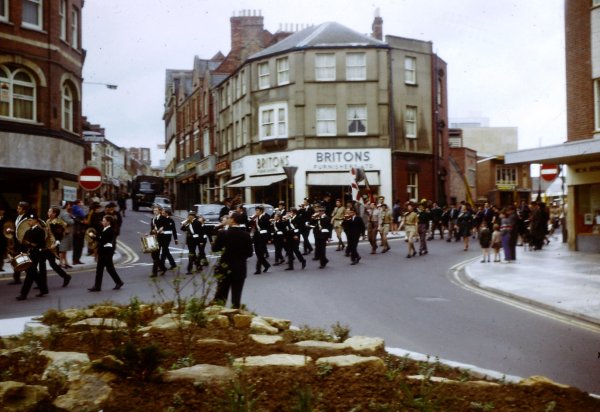
Courtesy of
Andy Keyse
From the Borough, the 1968 St George's Day parade passed down Silver Street, tuning into Vicarage Street. Here the parade, led by the Boys' Brigade Band is seen leaving Vicarage Street and entering the Triangle.
|
The Boys' Brigade Band march through the Borough in 1983, passing the Carwardines, formerly the Cadena, building in the back ground.
|

Also very popular was the Gardens Nightclub in Clarence Street, later called Le Jardin, and giving rise to the expression "I'm going gardening tonight". Who can ever forget dancing by the plastic palm trees - as seen in the following photograph.
A later photograph, taken from Clarence Street after the name had been changed to Le Jardin.
By the time of this 1984 photograph the former stables and garage of the Three Choughs Hotel, on the corner of Hendford and West Hendford, had been converted to a disco / nightclub - initially called the Camelot Suite in the early 1970s, then Oliver's in the late 1970s and the Electric Studios, or simply the Studios, in the early 1980s. By its final closing in 2003 it was called Arena.
Photographed in 2003, when the nightclub finally closed as Arena. There is now a block of flats on the site.
Another big "thank you" to various members of the 'Bygone Yeovil' Facebook Group for the following selection of comments that give a flavour of this establishment in its various guises - "Great times - especially in the Camelot days." - "Many a Saturday night spent there in the 80s." - "Some of my happiest memories were made at Olivers and the Studios." - "Remember the Electric Light Studios well" - "Yes loved it there, had many a laugh." - "I remember going to Saturday afternoon discos there." - "Had season ticket for that place!" - "This was my favourite nightclub in Yeovil - loved the music they played. Back in the 1980’s these places had a dress code - no jeans or trainers allowed, and men had to wear a shirt with a collar!" - "Used to go to it every weekend in the 80s when was Studios, some great memories of those days" - "Many a night out till 2am." - "We used to go to Arena quite regularly" - "Many many many good nights spent at Electric Studios" - "Happy memories... well, drunken hazy ones!"
This old building in Court Ash, once Atherton & Clothier's leather cutting factory, opened as Court Ash Disco in the early 1970s before becoming Maggie's. It later changed to Pandora's 'Discotheque & Bar as seen here in the 1970s. The building survives today.
Yet another big "thank you" to various members of the 'Bygone Yeovil' Facebook Group for the following selection of comments that give a flavour of this establishment in its various guises - "Very small dance floor and mice running along the bar." - "Many a good night there." - "Stand still for too long and you would stick to the floor." - "The only place you could get into if you were banned from the other clubs." - "It had a more relaxed dress code, which was pretty handy if you didn't happen to be wearing 'smart' shoes, a pair of chinos and even a tie some nights." - "You needed a gum-shield and 8 pints in you, to go in there after 11 o'clock." - "Upstairs chicken in a basket, real posh In those days." - "It used to be a real mod hangout. I think the records were probably played on a Dansette in the days before amplification." - "Rough as hell, loved it." - "Frequented regularly by the police doing raids." - "I went there once and some bloke went flying through the window! Happy days." - "We use to go there if you couldn’t get into Carnaby's." - "It was probably the only place where the bouncers threw people in and not out." - "Definitely a place of last resort." - "Many a night spent dancing the night away in there."
|
Local lads,
made good....

Nick
Pickett
was born in
London in 1949,
but lived in
Yeovil. Late in
1969 he joined
the John Dummer
Blues Band as
lead singer and
guitarist. He
wrote and
produced a
number of
recordings with
the band,
including their
hit single "Nine
By Nine". He has
recorded as a
soloist for
Warners, as well
as recording as
a guest with
many other
artistes,
including
Fleetwood Mac,
Chicken Shack,
Daddy Longlegs,
Mungo Jerry and
Andy Fernbach.
John
Parish,
born (1959) and
raised in
Yeovil, is a
musician,
songwriter,
composer and
record producer.
He is the
brother of
actress Sarah
Parish. He is
best known for
his work with
singer-songwriter
PJ Harvey (who
lived in nearby
Corscombe), they
have worked on
seven albums
together. He has
also worked with
such artists as
Eels, Aldous
Harding, Tracy
Chapman, Giant
Sand, and
Sparklehorse.
Roger
Burridge,
from Hardington,
was educated at
Preston School
in Yeovil. He
was an
outstanding
fiddler, like
his father Oscar
who played with
the Yetties.
Roger played
fiddle with many
groups including
Fairport
Convention. He
moved to Ireland
and then
America, where
he died in 2020.
![]()
|
Johnson Hall opened in July 1974 as a multi-purpose civic hall, thanks to the generosity of Yeovil's greatest benefactor, W Stanley Johnson. The hall had a 560-seat auditorium with tiered retractable seating which could be fully retracted for rock and pop concerts in what was called a 900-capacity 'Promenade' style layout. It could also accommodate 450 people in a 'dance layout' - tables and chairs around a central dance floor. It became the district's major music venue, attracting a wide range of acts. Photographed in 1978.
Courtesy of Graham Kersting At left, a poster, and at right two tickets, for bands at Johnson Hall. Sassafras was a local band, while Argent were a London-based English rock band founded in 1969 by keyboardist Rod Argent, formerly of The Zombies, and the Kursaal Flyers were a British pop band, formed in Southend-on-Sea in 1973.
Courtesy of Graham Kersting Yeovil attracted several major international groups. The hard rock band AC/DC was formed in 1973. They appeared at Johnson Hall in 1976, promoting the international version of their first album, High Voltage.
|
|
The Johnson Hall was renamed The Octagon Theatre in 1985 and remained the premier music venue in the area. It featured in the 'circuit' for tours of musical acts from far and wide, but also hosted local bands, etc., as shown by the selection of posters below.
A poster for the 4 September 2016 performance of the Yeovil Town Band at the Octagon. (That was my birthday, so I had other plans).
|
|
Westlands Entertainment Venue (the old Westland Sports & Social Club) opened around 2014 as an adjunct to the Octagon and, during the current modifications to the Octagon, has become the district's premier venue. The venue features many local and national acts, and again, features in the 'circuit' for tours of musical acts.
Courtesy of Graham Kersting
|
 |
Stuck in hospital? Nothing to do? Forgot to bring your Walkman or your CD player? Forgotten your transistor radio (remember them?)? Radio Camelot is a unique hospital radio broadcasting charity based at Yeovil District Hospital. It first started broadcasting back in 1973. Their volunteers deal with all areas ranging from patient liaison to broadcasting. |
![]()

Acorn Music, in Glovers Walk. I've lost count of how many albums I bought in here.
![]()
|
People's Choir, Yeovil was founded in 2012 and is a well established, friendly, non-auditioning community choir, which anyone can join. The choir meets on Tuesday evenings at St Peter’s Church, Coronation Avenue. The choir sings a wide ranging and eclectic variation of music for everyone to enjoy singing together, and holds two concerts each year; the Summer Concert is held in June and the Christmas Concert in December.
|
|
Yeovil Chamber Choir is an amateur chamber choir of about 20 experienced singers from the local area and based at St Andrews' church. It was formed in January 1993 to provide a platform for performing music that would normally be outside the scope of a choral society. Their repertoire includes both accompanied and unaccompanied music. In addition, they have both commissioned and performed new compositions. Yeovil Chamber Choir performs a minimum of three concerts a year, usually in local churches.
|
|
Yeovil Community Orchestra plays a wide selection of music and are expanding their repertoire each week. The existing repertoire includes West Side Story, Vaughan Williams English Folk Song Suite, Handel's Water Music & Fireworks Suites, Poet and Peasant Overture, Schindler's List, The Gadfly, Swan Lake excerpts, The Last Spring, an original and extremely popular Selection of John Barry themes, Pirates of the Caribbean, plus Christmas and Festive Music. The orchestra also plays selections from theatrical shows, and they sometimes combine with Yeovil Community Choir to perform joint items.
|
|
Yeovil Concert Band is a wind band, consisting of brass, woodwind and percussion. It was formed in 1999 with just eight members, since when the band has gone from strength to strength and now has around 35 members. The band play a wide repertoire of music including marches, selections from the musicals, light classical, solo features, Broadway selections, film music and much more - performing several concerts a year, mainly for charities in and around the Yeovil area.
|
|
Yeovil Ukulele Club was formed in 2014 following an advert in the local paper. Initially 14 people joined but each week the numbers grew. The club now averages 55 attendees each week, and has given performances at the Yeovil Show and frequent socials. People from all walks of life meet, strum and sing-along whilst raising awareness and money for local charities.
|


Music is alive
and well in
Yeovil
- these are
bands scheduled
to play in the
Beehive,
Huish, in
September and
October 2023,
and this is not
the only Yeovil
venue supporting
up-and-coming
local talent.
![]()
About the "Story
of Yeovil"
Project
Under the
auspices of the
Arts & Heritage
Working Group, "Story of Yeovil"
is a community
arts and
heritage project
for Yeovil
residents and
visitors from
further afield.
There is a
programme of
events, talks,
online
exhibitions, educational
resources,
publications,
displays and
workshops taking
place over 18
months until
March 2024.
The online exhibitions of Yeovil's Virtual Museum will remain here indefinitely.
The project explores Yeovil’s heritage and social history through the voice of local communities. We will gather stories from diverse perspectives through a series of creative activities and share them through three main themes: View of Yeovil, Sound of Yeovil and Taste of Yeovil.


 From at least
1885 and as late
as 1910,
the large yard
at the rear of
the
From at least
1885 and as late
as 1910,
the large yard
at the rear of
the
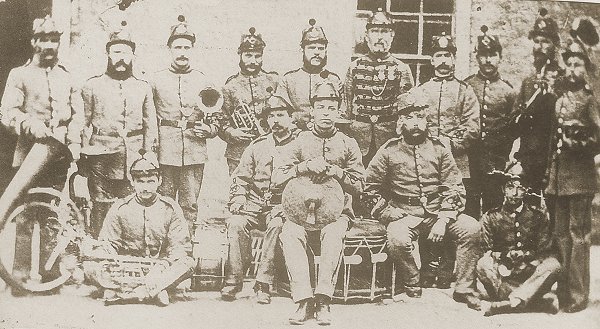
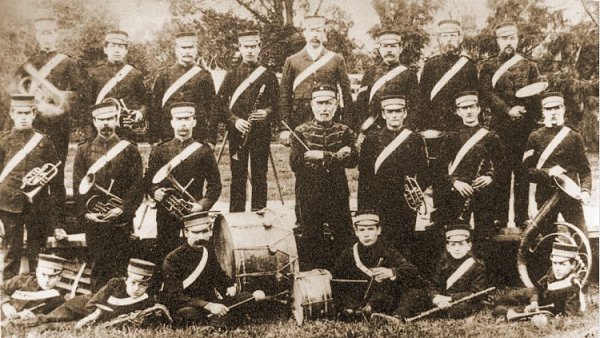
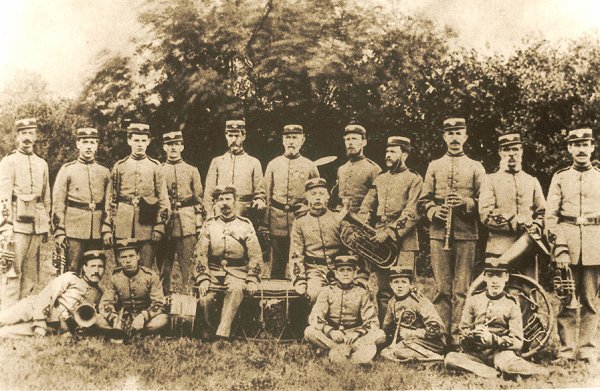
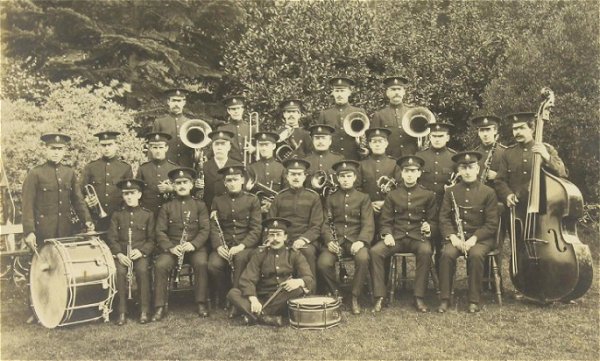
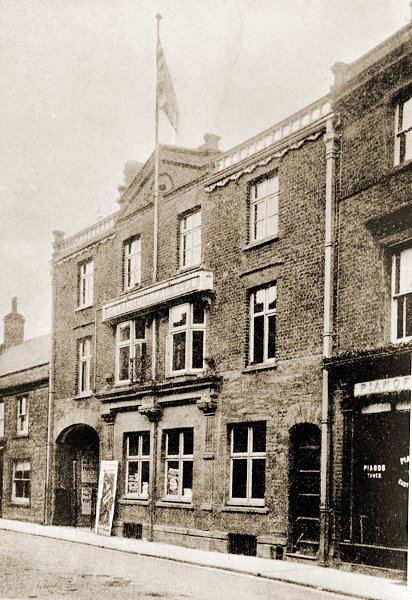
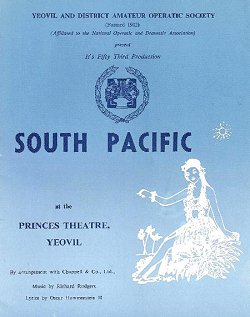
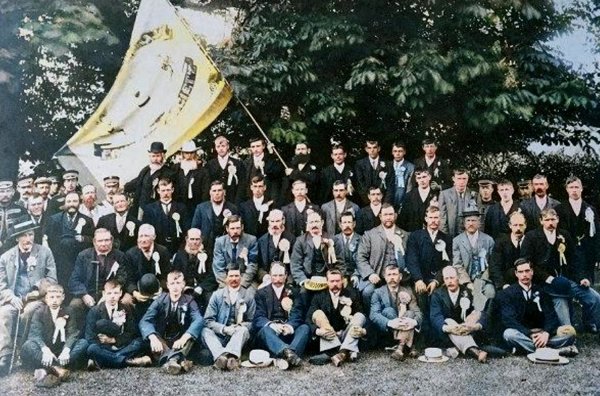
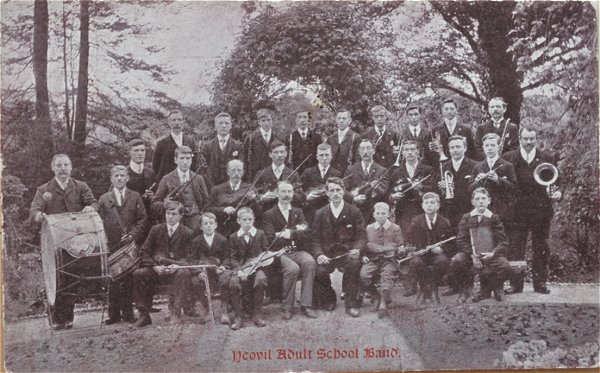
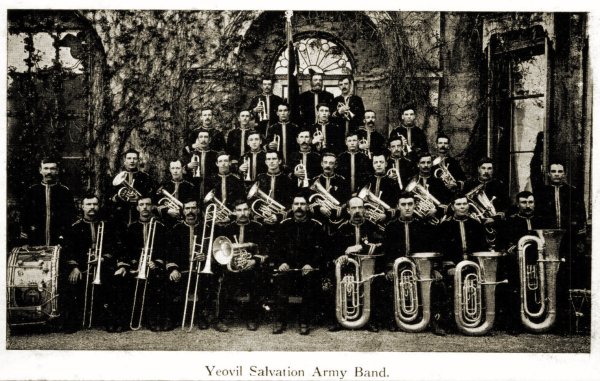
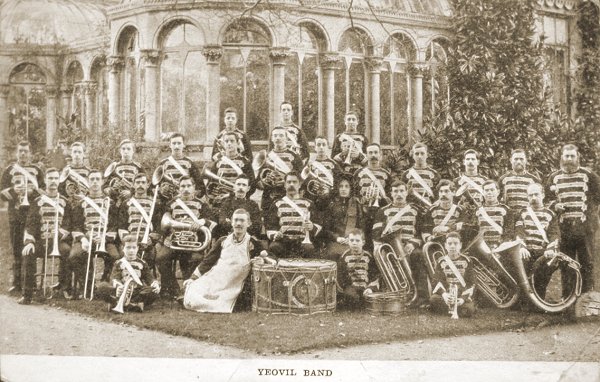

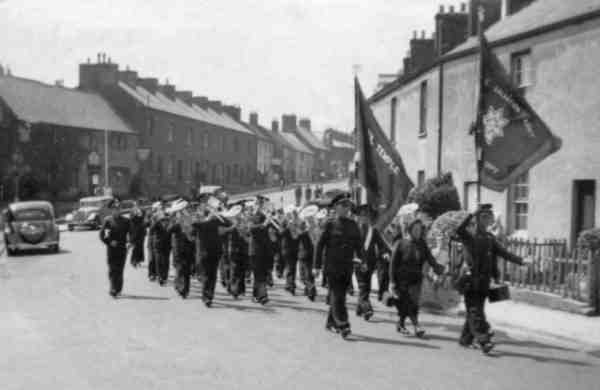
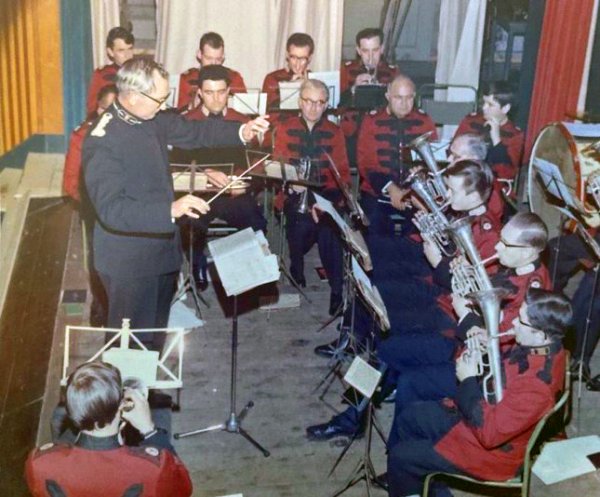

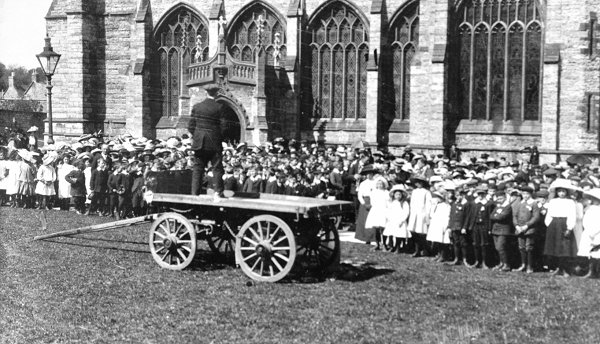
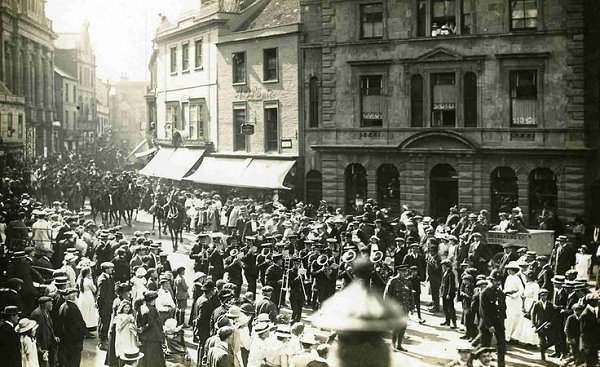
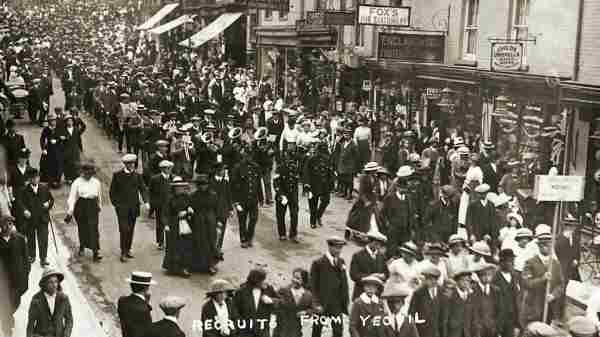
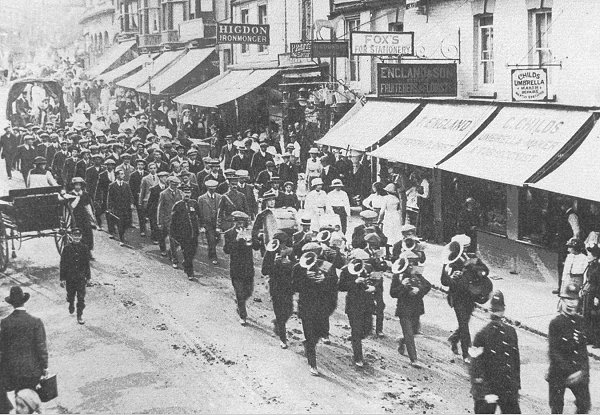

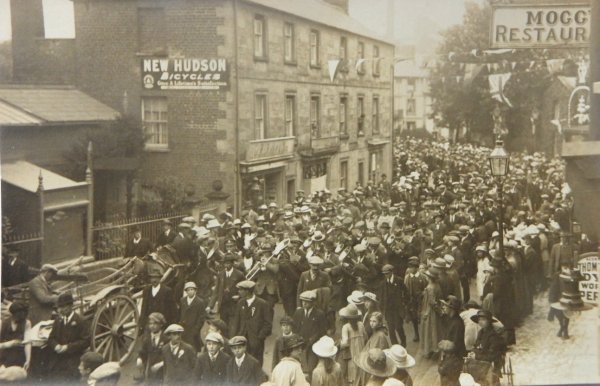
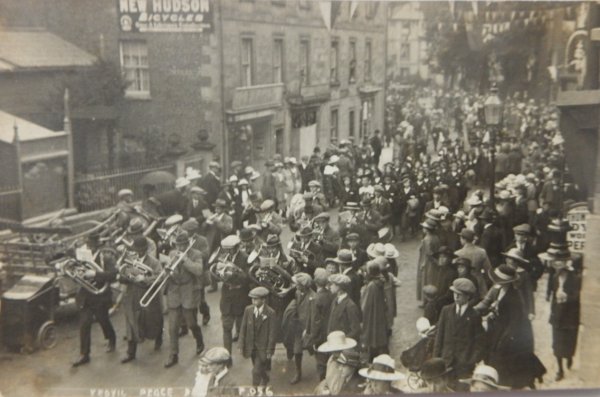
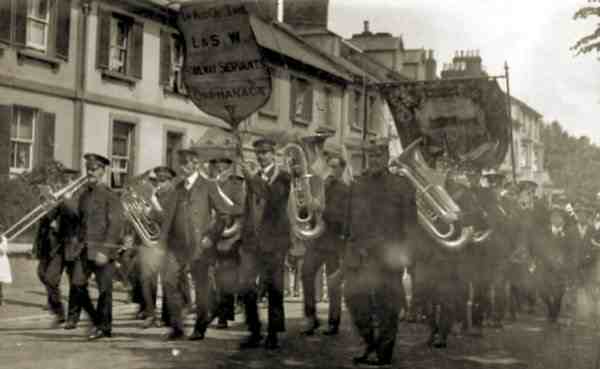
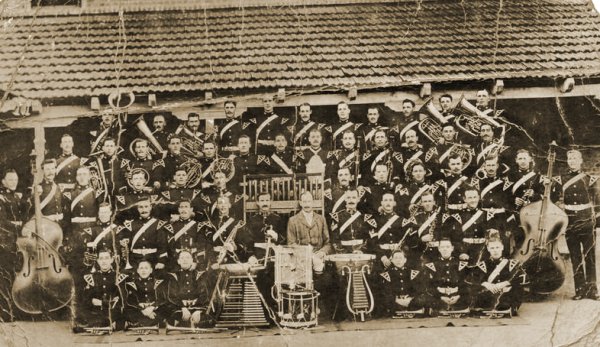



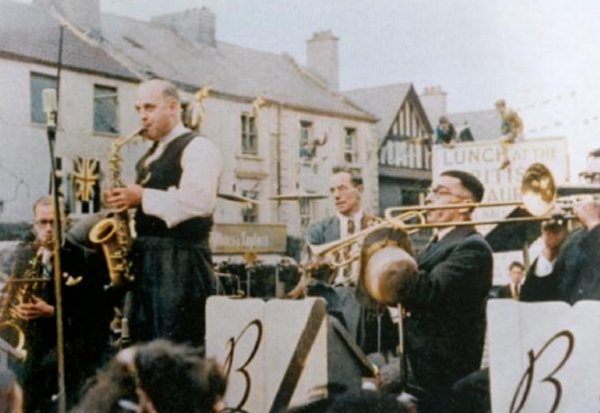
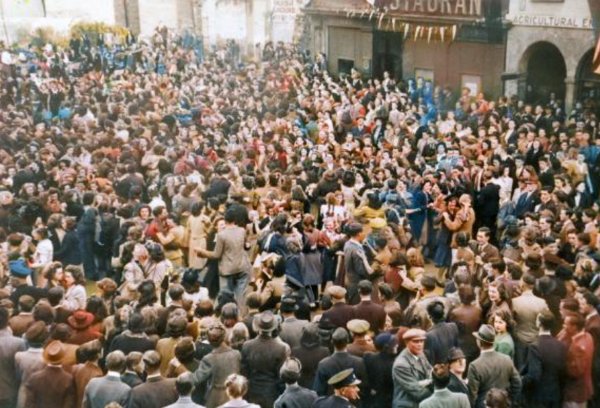



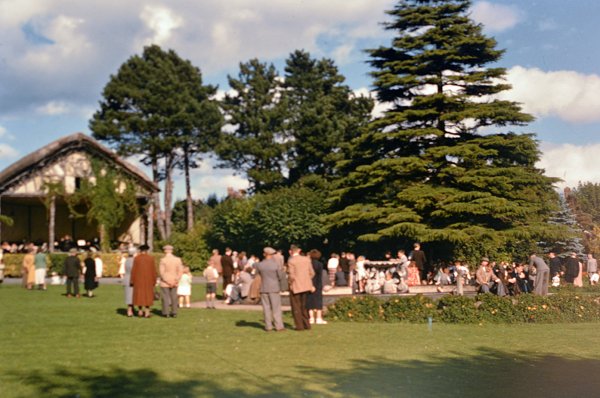






 In January 1961, Mike Tozer formed the rock 'n' roll band, The Tornadoes with a lineup that included former Bandits members, lead guitarist Steve 'Stimpo' Stimpson, bass guitarist Ian Jay and drummer Jeff Walbridge, together with rhythm guitarist Dave Martin. The band was troubled by several lineup changes and in 1962 the instrumental Telstar by the professional English band, also called the Tornadoes, reached No 1. In response, Yeovil's Tornadoes became The Cortinas.
The new band comprised 'Stimpo' and Dave Martin - the two surviving members of the Tornadoes - together with vocalist Rod Trott, bassist Mick Francis (later replaced by Ian Jay) and drummer Bob Chainey (later replaced by Jeff Walbridge)..
In January 1961, Mike Tozer formed the rock 'n' roll band, The Tornadoes with a lineup that included former Bandits members, lead guitarist Steve 'Stimpo' Stimpson, bass guitarist Ian Jay and drummer Jeff Walbridge, together with rhythm guitarist Dave Martin. The band was troubled by several lineup changes and in 1962 the instrumental Telstar by the professional English band, also called the Tornadoes, reached No 1. In response, Yeovil's Tornadoes became The Cortinas.
The new band comprised 'Stimpo' and Dave Martin - the two surviving members of the Tornadoes - together with vocalist Rod Trott, bassist Mick Francis (later replaced by Ian Jay) and drummer Bob Chainey (later replaced by Jeff Walbridge)..
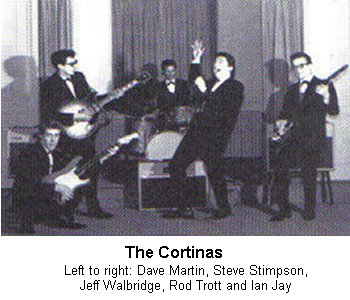

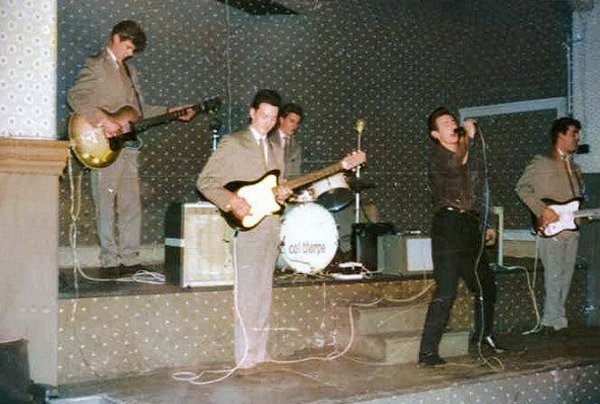
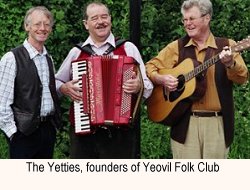 Prior
to
turning
professional,
the
Yetties
set up
the
Yeovil
Folk
Club
in 1963.
Prior
to
turning
professional,
the
Yetties
set up
the
Yeovil
Folk
Club
in 1963.
